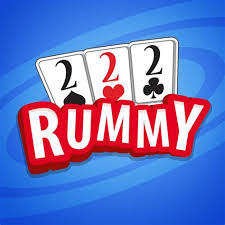Rummy Rules 13 Card Sets, Rummy is a classic card game enjoyed by millions worldwide, and the 13-card variant is one of the most popular formats. With its blend of skill, strategy, and a bit of luck, 13-card rummy offers a thrilling experience for both new and seasoned players. In this article, we’ll delve into the rules of playing 13-card rummy sets, providing a clear understanding of how to play and win.
Objective of the Game
The primary objective in 13-card rummy is to arrange all the cards in your hand into valid combinations before your opponents do. The combinations can be formed in two main ways:
- Sets: Three or four cards of the same rank but different suits (e.g., 7♥, 7♣, 7♦).
- Runs: Three or more consecutive cards of the same suit (e.g., 4♠, 5♠, 6♠).
Setup
- Number of Players: The game can be played with 2 to 6 players.
- Deck: A standard 52-card deck is used. In some variations, jokers may be included as wild cards.
- Dealing: Each player is dealt 13 cards, and the remaining cards form the draw pile. One card is placed face-up to start the discard pile.
Basic Rules of 13 Card Rummy
1. Game Turn
Players take turns in clockwise order. On a player’s turn, they must:
- Draw a Card: Choose one card from either the draw pile or the discard pile.
- Form Sets and Runs: After drawing, players can lay down valid combinations of cards.
- Discard a Card: End the turn by discarding one card to the discard pile.
2. Valid Combinations
- Sets: Must consist of three or four cards of the same rank.
- Runs: Must have at least three consecutive cards of the same suit.
3. Going Out
A player can “go out” when they successfully arrange all their cards into valid sets and runs and discard their last card. When this happens, the round ends.
4. Scoring
Scoring in 13-card rummy is based on the cards left in the opponents’ hands when someone goes out:
- Number Cards (2-10): Face value points.
- Face Cards (J, Q, K): 10 points each.
- Aces: 10 points.
- Jokers: Can be considered as 0 points or the value assigned by the game rules.
The goal is to minimize the points left in your hand while maximizing those in your opponents’ hands.
Strategies for Winning
- Keep Your Options Open: Try to maintain a balance between forming sets and runs. This flexibility can help you adapt to changing situations during the game.
- Watch Your Opponents: Pay attention to the cards your opponents draw and discard. This observation can provide clues about their potential combinations.
- Discard Wisely: Be cautious about what you discard. Avoid giving away cards that could help opponents complete their sets or runs.
- Use Jokers Strategically: If playing with jokers, use them wisely to complete your combinations, but be mindful of their value when it comes to scoring.
- Practice Regularly: The more you play, the better you’ll understand the nuances of the game, allowing you to refine your strategies over time.
Conclusion
13-card rummy is a captivating game that combines strategy, observation, and social interaction. By understanding the rules and employing effective strategies, players can enhance their chances of winning and enjoy the game even more. Whether you’re playing with friends or participating in online tournaments, 13-card rummy promises an engaging and thrilling experience. So gather your cards, form those sets and runs, and may the best player win!




